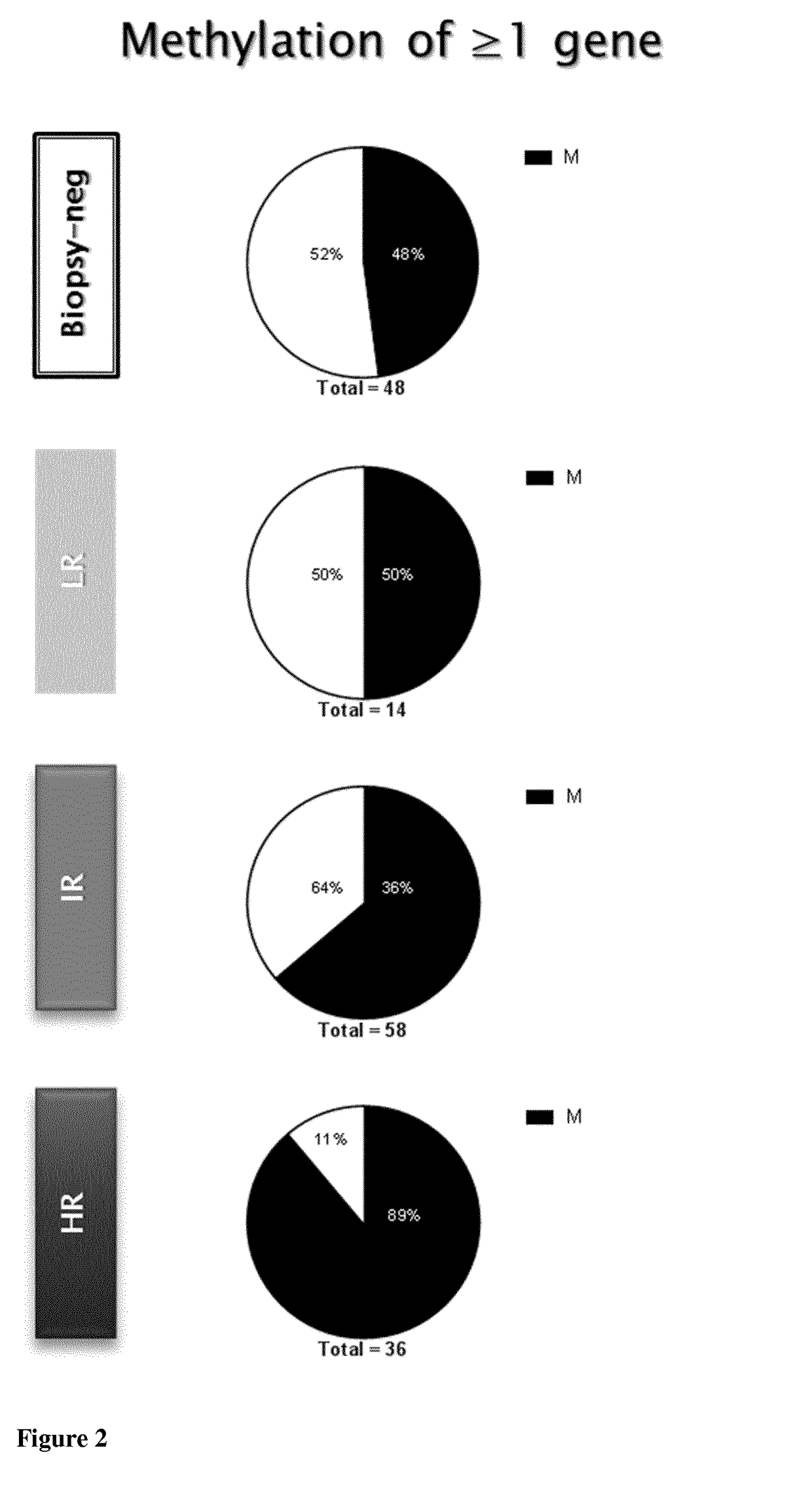A dna-methylation test for prostate cancer
- Summary
- Abstract
- Description
- Claims
- Application Information
AI Technical Summary
Benefits of technology
Problems solved by technology
Method used
Image
Examples
Embodiment Construction
Materials and Methods
Statistical Methods:
[0100]Logistic regression is a standard method for modelling the relationship between a binary variable, in this case high-risk versus low-risk prostate cancer, and a set of continuous or categorical variables. For this analysis, the variables used for prediction consist of gene methylation values, as well as patient variables age and PSA. Mathematically this relationship is expressed as
log(pi1-pi)=β1X1i+β2X2,i+…+βmXmi(1)
[0101]where pi is the probability that the nth patient is high-risk based on their methylation profile and clinical characteristics, which are represented by the Xmi's. The βm coefficients give the effect that each incremental change in methylation, age or PSA has on the log-odds of the patient being high risk of prostate metastasis.
[0102]Due to the cost of collection of biomarkers, and the general principle that simpler models lead to more robust predictions, one aim of the analysis is to choose the smallest number of predic...
PUM
| Property | Measurement | Unit |
|---|---|---|
| Fraction | aaaaa | aaaaa |
Abstract
Description
Claims
Application Information
 Login to View More
Login to View More - R&D Engineer
- R&D Manager
- IP Professional
- Industry Leading Data Capabilities
- Powerful AI technology
- Patent DNA Extraction
Browse by: Latest US Patents, China's latest patents, Technical Efficacy Thesaurus, Application Domain, Technology Topic, Popular Technical Reports.
© 2024 PatSnap. All rights reserved.Legal|Privacy policy|Modern Slavery Act Transparency Statement|Sitemap|About US| Contact US: help@patsnap.com










